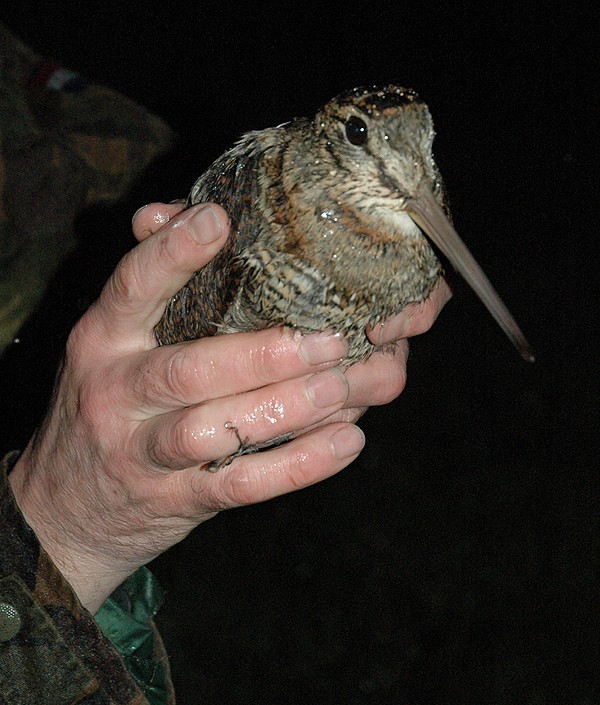Shooting woodcock in the Isle of Skye

The morning was bitter crisp, the air crystal clear and the frost was still clinging to the tussocks as I slid my Holland & Holland Royal from its sheepskin sleeve on the back seat of the Land Rover. The dirt road gleamed with ice on this December day on the seaboard, high up in the western Highlands. Meg, the springer spaniel, quartered ahead, liver and white rump wagging, in response to signals from Angus, her owner.
Time was limited; the migrating woodcock were not yet there in numbers, but we were after local birds — few in number, but you could find one if you knew where to look. The prospect of visiting the Isle of Skye for my first woodcock was an exciting one.
The campaign plan had been laid in the bar the previous evening over a dram with Angus, the stalker and gamekeeper on a neighbouring estate. In another two days I would be back in London and the migrant woodcock, which were expected from Scandinavia any day after the November full moon — the shooters’ “woodcock moon” — would have been and gone, scattered by paying Guns from France and Belgium.
We planned a civilised start at 10am. There was time for the watery sun to strengthen and the cloud to roll away. Wisps of snow drifted down but little stirred as we toiled along the lower slopes of the glen, breath steaming, Meg excited, and Angus — whistle clenched between his teeth — with reddened cheeks and a beard flecked with snow.
The tiny stream, choked with ice, was almost silent, the tinkle of running water muffled. We crunched our way over dead bracken in a landscape where we seemed to be the only living things. We had still seen nothing. My fingers inside my silklined shooting gloves were numb and my concentration was beginning to wander. I thought of lunch and a cheerful log fire. We turned away, back towards the road.
Beyond us, through the straggling pines, a stain blotched the snow. “That’s new,” said Angus. “Poacher. He knew I wasn’t out last night and he’s taken a stag.” Later, we found the innards, head and legs, still untouched by foxes. By the fence at the roadside were tyre marks. A marauding deer may be fair game on a smallholder’s croft, but for a freelance rifle on the hill, it’s still a crime. The poacher doesn’t differentiate between a fine royal stag and a weakling — saddles of venison all taste the same.
Time was getting on. Daylight is short in the north of Scotland. In the dead of winter, beginning at 9.30am, there are barely six hours. Suddenly there was a whirr, a clatter, and the biggest woodcock you ever saw was up, aloft and away with that familiar jink. Meg froze and Angus threw himself full-length on the ironhard ground. “Take it!” he shouted. The Holland 12-bore came up to my shoulder but the load of No.7 shot was high and behind.
There was a moment of silence. Angus straightened up, knees wet. “Did you mark it?” he asked. “In the stand of birch, beyond the road,” I replied. He whistled Meg over. “Take up a position on the other side of the trees,” he directed.
“I’ll use Meg to push it out.” In position, I waited as they disappeared from view. There was crackling and scraping as they forced their way to the centre. Then, again, a whirr, followed by a hoarse shout: “Over!”
Like a giant moth
Up came the Holland. Never was I more ready. Then round the edge of the trees it came, floating towards us like a giant moth, its colours clear. It was truly a woodcock for the record book, like a painting by the artist Archibald Thorburn come to life.
A thought flashed through me: this is unsporting, I can’t miss. Should I wait, take it from behind? No further time, the gun was up, in line, swinging, finger squeezing. Nothing happened. I jerked the unyielding trigger again. Still nothing. Then came the realisation — the safety catch! But by then the bird was jinking past me and away, and the shot I finally got off was more of a salute to a golden opportunity now lost.
Angus emerged. Meg looked at me, head on one side. Crestfallen, I blurted out an excuse, his good work all to waste. But Angus had seen it all before. His reassuring “It happens” was more than I deserved.
It seems even an expert can have an offday. I was ruefully relating the story to Ken Davies, then chief instructor at the Holland & Holland shooting grounds in north London, as he put my 13 year-old son through his paces with his 20 bore. The same thing had happened to him, he admitted, when a mallard jumped during an evening riverside stroll. I’m no expert, but I’m in good company.
That was some years ago, and the memory of the one that got away is as fresh as ever. As I sit in my gunroom, looking at the gamebook — the entry for woodcock still blank — I think I wouldn’t have had it any other way. I like to think that, somewhere in a remote Highland glen, a woodcock that never made the record books still flits like a ghost between the stands of rowan and silver birch.








